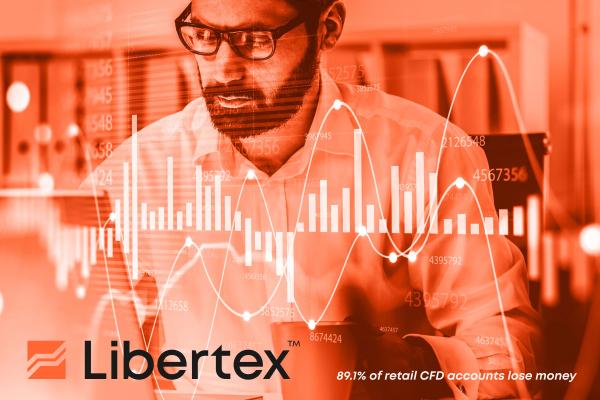The past few years have been a rollercoaster ride for both traders and investors. Since the global pandemic of 2020, we've seen crashes, bubbles and just about everything in between. As of the start of this new year, the stock markets seem to be shaping up for a new bull cycle. But after what happened in Q4 2021, people are understandably reluctant to stick their necks out again. With inflation still way above target and the geopolitical situation teetering on a knife edge, it's impossible to say for sure whether the bottom has been and gone.
Such rampant volatility, as we've observed of late, was always bound to take its psychological toll on even the most stoic of market participants, and you'd need nerves of steel to try and predict the market at a time like this. But after all, it's ordinary traders and investors that move the market and understanding what "groupthink" is could be your key to making money in turbulent conditions such as these. With this in mind, today we will be looking at some of the best-known indicators of trader sentiment and how these combine with existing fundamental factors to direct the future trajectory of world equities markets.
Fearful and needy or selfish and greedy?
Perhaps the most popular indicator of market sentiment — and one named after a famous Warren quote, no less — is the Fear and Greed Index. Initially developed by CNN Money, its purpose is to determine whether investors are overly bullish or overly bearish on the major US stock indices. The scale ranges from O (extreme fear) to 100 (extreme greed) and is calculated using seven key factors: Stock price strength, stock price breadth, market momentum, put and call options, safe haven demand, junk bond demand, and market volatility. The index's current level of 69 is only 10% lower than its 12-month high of 76, suggesting relatively high levels of greed.
For much of the past 18 months, however, the indicator has been swinging wildly from extreme fear to within a few points of its present reading as a result of ongoing Fed tightening, inflation, and geopolitical instability. Its wide scope makes the Fear and Greed Index a good general barometer of the overarching market psyche, but it must be combined with other analysis tools, as well as non-technical fundamentals, to give actionable guidance. And this time is no different. It will ultimately be the world central banks that decide whether a new bull cycle emerges. If they stay hawkish and keep hiking above the suggested terminal rate of 5.0-5.75%, the chances of a sustained uptrend will be significantly diminished.
Value the VIX
The VIX, or volatility index, was created by the Chicago Board of Options Exchange and is designed to track the implied volatility of S&P 500 options. Basically, when the VIX is low, volatility is low, and when the VIX is high, volatility is, too. The simplest way to think about the VIX is almost like an inverse S&P 500. That's why traders say: "When the VIX is high, it's time to buy (ordinary stocks). When the VIX is low, look out below!" The best feature of the VIX is that it allows us an insight into the psychology of the big market movers. Because these players are unable to sell off their entire stock positions when they feel markets are turning, they instead purchase options in order to offset their losses.
Since the VIX essentially tells us what kind of options the major institutions are purchasing, it allows us to pre-empt large moves to the downside. The indicator has been below its key level of 20 for the past week now, and the technical analysis would suggest that we will need to wait until at least March for a retesting of the January high of 2022.
There are, however, certain market participants that are banking on more significant swings in the medium term. The famous "50 Cent" options trader was back in the market this past week, purchasing 100,000 call contracts at 50 cents each for a total of $5 million and then another 50,000 identical contracts worth $2.6 million a day later. Whoever this mysterious investor is, they are predicting a rise in the VIX above 50 in May. With the ongoing conflict in Europe and global economic uncertainty in general, there certainly are plenty of potential factors for such an eventuality, but traders will have to use both technical and fundamental analysis for actionable information.
All about the fundamentals
As much as TA buffs will try to persuade you otherwise, fundamentals are absolutely central to trader psychology. Especially as the stock market becomes more and more saturated with retail traders and investors — many of whom take their lead exclusively from news events and emotional cues — the effects of general economic developments on equities markets are becoming increasingly pronounced. And despite the average 10% YTD increase in the major US indices, there are a number of fundamental factors that will have more of a say in whether this rally turns into another bull cycle or not.
First, there's the Fed and its hawkish stance. Rates have now been increased 450 basis points this past year alone, and yet inflation remains above target. If we don't see inflation down below 4% when Powell's terminal rate of 5.25-5.75% is reached, it's hard to see how there will be any appetite for risk. US and European PMIs are also below that magic 50 number, making corporate profits vulnerable. If Q1 reports underperform, stocks will struggle to make significant gains, especially in a tightening cycle. One factor that is positive for US equities, however, is the strong labour market data we've seen in recent months. After adding 517,000 new jobs in January, US employment continues to expand despite surging energy costs — a factor that could help engineer a soft landing in case of a correction in stocks. Essentially, everything is still up in the air, and traders ought to take their lead from a combination of volatility indicators and fundamental developments for the best results this year.
Trade the trend with Libertex
With Libertex's extensive equities CFD offering, which includes long and short positions on the S&P 500, Nasdaq, Dow Jones and others, you're able to make a trade in any market situation. With the Libertex trading app, you can hold all your CFDs on one platform. For more information or to create your own account, visit www.libertex.com
Risk Warning: CFDs are complex instruments and come with a high risk of losing money rapidly due to leverage. 89.1% of retail investor accounts lose money when trading CFDs with this provider. Tight spreads apply. Please check our spreads on the platform. You should consider whether you understand how CFDs work and whether you can afford to take the high risk of losing your money.


